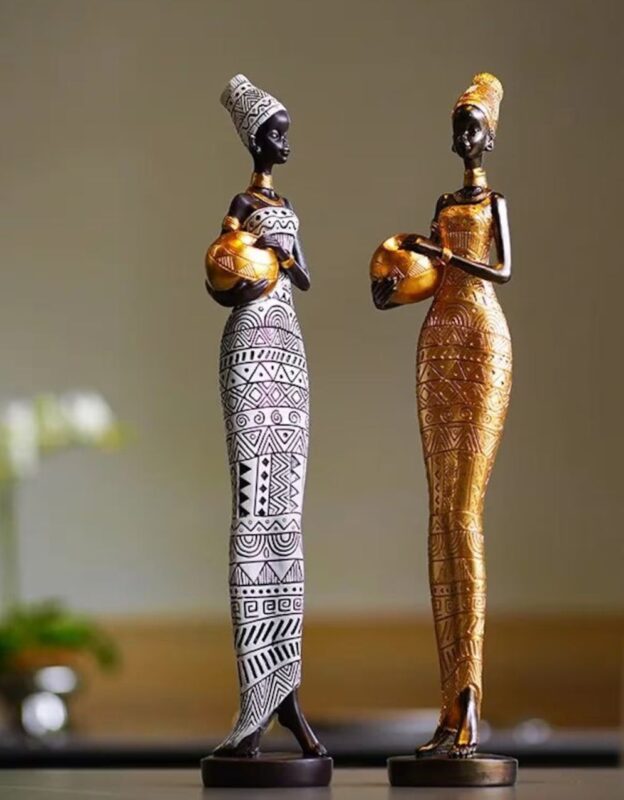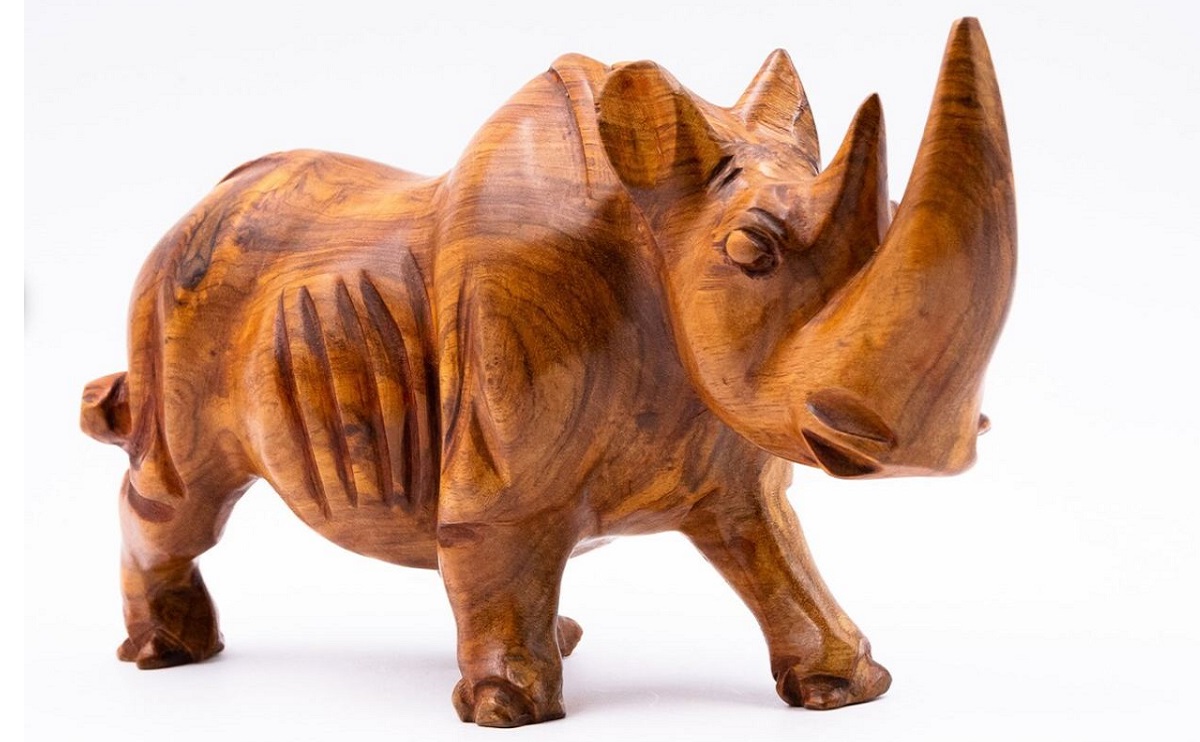Craftsmanship in Africa is a vibrant and integral part of the continent’s cultural heritage, representing a rich tapestry of traditions, skills, and artistic expressions. From time-honored techniques passed down through generations to contemporary innovations, African crafts encapsulate the diversity, resilience, and creativity of the people across the continent. This essay will explore the significance of craft in Africa, examining its historical roots, cultural importance, and the role it plays in shaping both local and global narratives.
Historical Roots of African Craftsmanship:
African craftsmanship has a deep historical foundation, rooted in ancient civilizations that thrived across the continent. From the intricate beadwork of the Maasai people to the iconic masks of West Africa, each craft form tells a unique story about the cultural, spiritual, and social aspects of African communities. These crafts served functional purposes, such as clothing, tools, and ceremonial items, while also embodying symbolic meanings that connected individuals to their heritage and belief systems.
Diversity of Craft Techniques:
One of the most remarkable aspects of African craftsmanship is its diversity of techniques and materials. Across the vast expanse of the continent, artisans employ a wide range of methods, such as weaving, carving, pottery, and metalwork. For instance, the Ashanti people of Ghana are renowned for their skillful wood carving, creating intricately designed stools that convey status and cultural significance. Meanwhile, the Tuareg people of the Sahara Desert craft exquisite silver jewelry that reflects their nomadic lifestyle and spiritual beliefs.
Cultural Significance:
Craftsmanship in Africa is deeply intertwined with cultural identity and community bonds. Many craft traditions are community-driven, with knowledge and skills passed down within families and local groups. This communal aspect not only ensures the preservation of craft techniques but also fosters a sense of unity and shared heritage. Crafts often serve as a means of storytelling, conveying narratives of history, mythology, and daily life through patterns, symbols, and artistic motifs.
Economic Empowerment and Sustainability:
In contemporary Africa, craftsmanship plays a pivotal role in economic empowerment and sustainable development. Artisan cooperatives and social enterprises have emerged, providing a platform for skilled craftspeople to showcase their work both locally and globally. Fair trade practices and ethical sourcing of materials contribute to the sustainability of these crafts, fostering economic independence within communities.
Global Influence and Recognition:
African crafts have gained international acclaim for their unique aesthetics and cultural significance. Exhibitions, galleries, and collaborations with international designers have provided a global platform for African artisans to showcase their talents. The appreciation for African craftsmanship extends beyond its aesthetic appeal, recognizing the resilience, ingenuity, and cultural depth embedded in each handmade piece.

Conclusion: Craftsmanship in Africa is a dynamic and evolving art form that encapsulates the essence of the continent’s diverse cultures. Beyond its aesthetic beauty, African crafts tell stories of resilience, identity, and community. As the world continues to recognize and celebrate the value of African craftsmanship, it is essential to support and preserve these traditions, ensuring that future generations can continue to weave, carve, and shape the narrative of Africa’s rich cultural heritage through the hands of skilled artisans.
- Beadwork in Maasai Culture (East Africa):
- Maasai beadwork is an integral part of Maasai culture, originating from Kenya and Tanzania. The Maasai people are renowned for their vibrant and intricate beadwork, creating jewelry, clothing, and decorative items. Bead colors and patterns convey specific meanings, representing aspects of their social structure, age, and even the connection to the environment.
- Kente Weaving in Ghana (West Africa):
- Kente cloth, originating from the Ashanti and Ewe people of Ghana, is a visually stunning textile created through intricate weaving techniques. Kente is characterized by vibrant colors and intricate geometric patterns. Each pattern has its own symbolic meaning, often associated with proverbs, historical events, or cultural values. Kente is worn on special occasions, such as weddings, festivals, and important ceremonies.
- Wood Carvings of the Makonde People (Southern Africa – Tanzania and Mozambique):
- The Makonde people are skilled woodcarvers known for their intricate and expressive sculptures. These carvings often depict figures with elongated limbs and dynamic poses, reflecting Makonde mythology, daily life, and spiritual beliefs. The Makonde are particularly renowned for their intricate and symbolic masks and fertility statues.
- Tuareg Silver Jewelry (North Africa – Saharan Region):
- The Tuareg people, nomadic Berbers of the Sahara Desert, are known for their distinctive silver jewelry. Silversmiths among the Tuareg create intricate designs, often incorporating geometric patterns and symbols. Each piece of jewelry holds cultural significance and may convey aspects of the wearer’s identity, such as their tribal affiliation or social status.
- Ndebele Wall Art (Southern Africa – South Africa and Zimbabwe):
- The Ndebele people are known for their vibrant and distinctive wall art. Using bright colors and geometric patterns, Ndebele women traditionally paint the exteriors of their homes. The patterns have cultural significance, with each design telling a story or representing specific aspects of Ndebele life, such as marriage or initiation.
- Berber Carpets in Morocco (North Africa):
- Berber carpets, handwoven by the Berber people of Morocco, are celebrated for their intricate designs and high-quality craftsmanship. Each carpet tells a unique story through its symbols and patterns, often reflecting the weaver’s personal experiences, cultural heritage, or the surrounding landscapes.
- Basket Weaving in Botswana (Southern Africa):
- Basket weaving is a traditional craft among various ethnic groups in Botswana, including the San people. These baskets are woven from locally sourced materials such as grasses and palm leaves. The intricate patterns and designs are not only visually appealing but also serve functional purposes, such as storage and carrying items.
These specific handmade crafts highlight the diversity and richness of artistic traditions across different regions of Africa. Each craft is a testament to the cultural heritage, skills, and stories embedded in the hands of the artisans who create them.
- Basket weaving is a traditional craft among various ethnic groups in Botswana, including the San people. These baskets are woven from locally sourced materials such as grasses and palm leaves. The intricate patterns and designs are not only visually appealing but also serve functional purposes, such as storage and carrying items.
Colors:
- Vibrant Hues: Many African cultures are known for their love of vibrant and bold colors. These colors are often symbolic, representing aspects of nature, spirituality, or social status.
- Earth Tones: Earthy colors such as browns, greens, and yellows are prevalent, reflecting the connection to the natural environment and traditional lifestyles.
- Indigo Blue: In some cultures, indigo blue is considered a significant color. It may symbolize spirituality, protection, or have ties to cultural practices.
- Reds and Oranges: These colors are often associated with energy, vitality, and, in some cases, ceremonial events. Red, in particular, may symbolize life, courage, and strength.
- Patterns:
- Geometric Designs: Many African textiles and crafts feature intricate geometric patterns. These designs can hold cultural meanings, telling stories or representing elements of daily life.
- Stripes: Striped patterns are commonly found in African textiles, such as the Kente cloth of Ghana. The orientation, width, and colors of the stripes can convey specific meanings.
- Mud Cloth Patterns: In West Africa, particularly among the Bambara people of Mali, mud cloth (Bogolanfini) is decorated with distinctive geometric patterns and symbols. These patterns often have cultural significance and may tell stories.
- Animal Motifs: Some African cultures incorporate animal motifs into their crafts and textiles, representing the significance of certain animals in their mythology, spirituality, or daily life.
- Symbolism: Many African patterns are symbolic and carry meanings related to spirituality, community, or the passage of time. These symbols can be expressed through textiles, beadwork, and other forms of traditional crafts.
It’s essential to recognize the diversity within Africa and avoid generalizations. Preferences for colors and patterns are highly influenced by cultural, regional, and individual factors. As a result, what is favored in one community may differ significantly from another.



